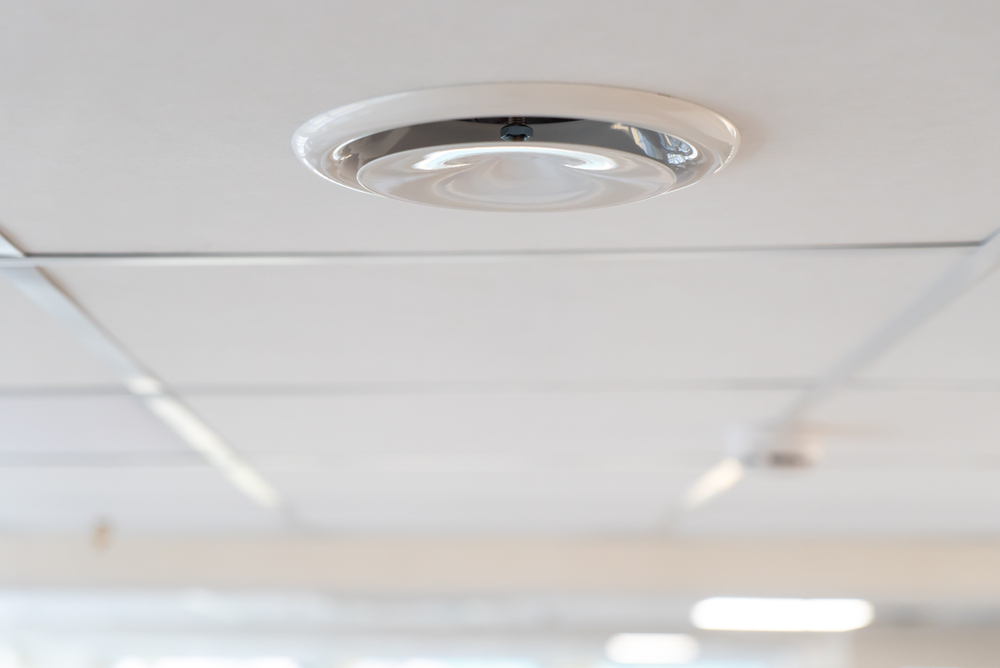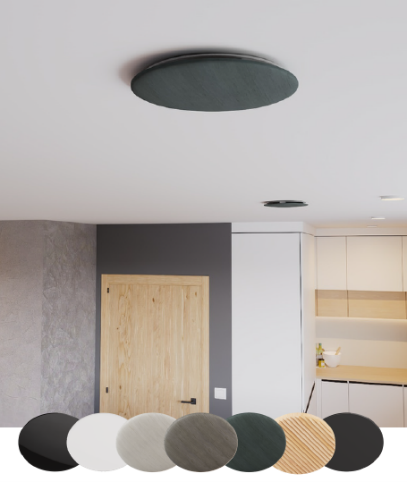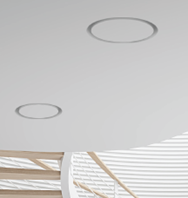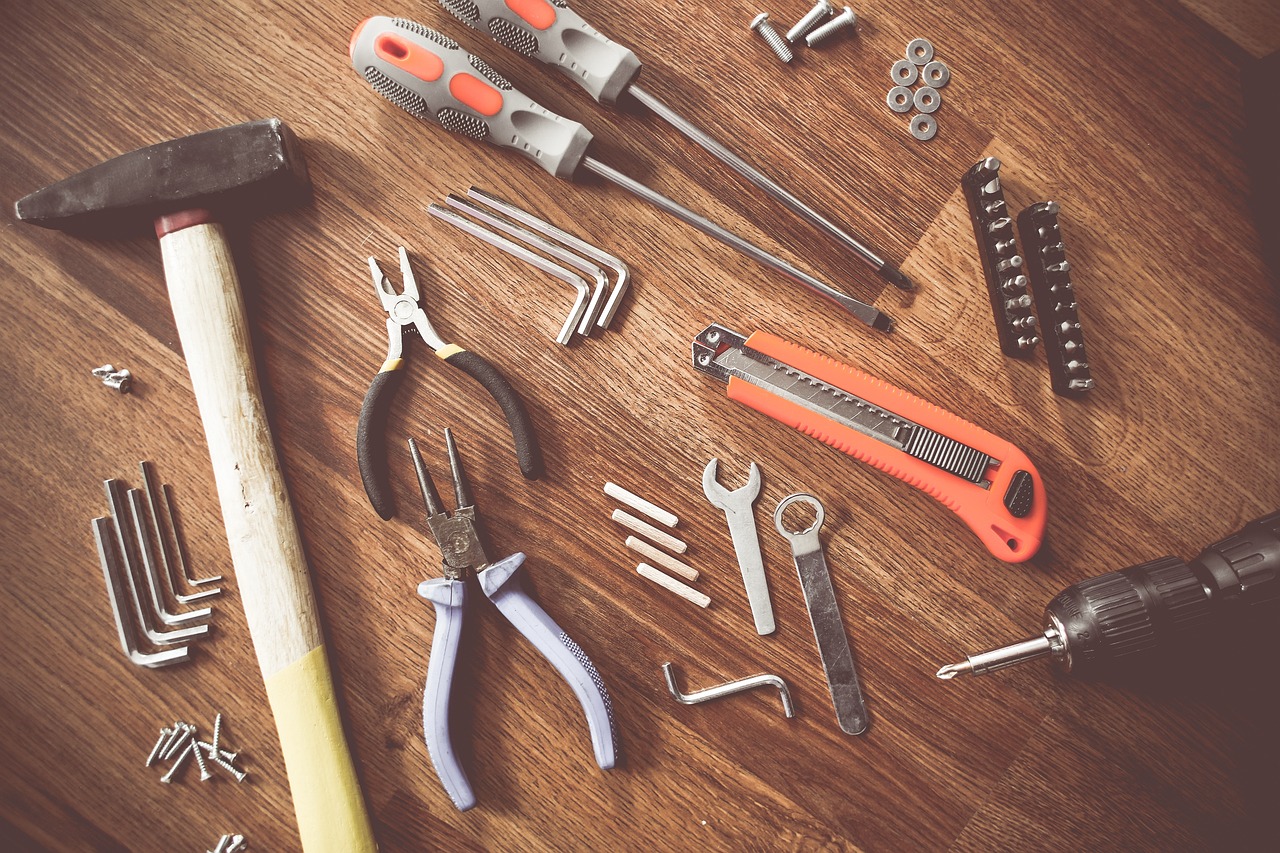How to choose air diffusers for your ventilation system

1. Why is choosing air diffusers crucial for your ventilation system?
In a ventilation system, each component plays a key role in ensuring thermal comfort and indoor air quality. Among these elements, air diffusers are often underestimated, despite their strategic importance in the proper functioning of your installation. Whether for a mechanical ventilation system (MVS), air conditioning, or air-to-air heat pump heating, air diffusers are central to system performance.
Understanding the role of air diffusers in a ventilation system
Definition and operation of air diffusers
Air diffusers are devices designed to introduce and distribute treated air (heated, cooled, or simply filtered) in an indoor space (homes, offices, and more generally commercial buildings). They can also be used to extract stale air.
The importance of air distribution for comfort and indoor air quality
Well-designed air distribution is essential for several reasons. Their choice, positioning, and sizing can significantly impact the overall performance of your ventilation system:
- Optimal comfort: Poor distribution can create drafts or temperature variations, directly affecting occupant comfort.
- Energy efficiency: Poorly adapted diffusers can generate high pressure drops, increasing the installation’s energy consumption.
- Indoor Air Quality (IAQ): Inadequate distribution can limit the effective extraction of pollutants, humidity, and odors.
As an indoor air quality specialist, CAIROX offers a wide range of air diffusion products designed to meet professionals’ specific needs through customized products.
Air diffuser selection is based on two key functions:
- Supply of fresh air
- Extraction of stale air
2. Key characteristics for choosing an air diffuser
The quality of an air distribution installation relies on 3 main principles:
- Air quality and thermal comfort (feeling comfortable in the room)
- Acoustic comfort (no parasitic noise)
- Architectural integration (installation is invisible, discreet, or harmonious)
The choice of an air diffuser depends on several characteristics to consider:
- Required airflow: The ideal airflow choice depends on each room’s function and size.
- Noise level: The noise generated by supply diffusers should not be audible to occupants. It depends on several parameters such as the supplied or extracted airflow, grille geometry, or the presence of an airflow adjustment register.
- Residual velocity in occupied zones: Excessive air velocity can cause uncomfortable drafts. On average, the ideal speed is often below 0.2 m/s.
- Throw distance: The optimal diffusion distance must be adapted to room sizes to distribute air homogeneously.
Learn more about choosing a specific diffuser for an MVS system
3. AIRDONYS & GYP: The new ranges of design, elegant, and modern diffusers by Cairox
Cairox constantly offers new cutting-edge products and solutions with contemporary and modern designs, such as our new AIRDONYS range:

AIRDONYS
Available in square or round formats and in various materials (wood, glass, concrete), our new AIRDONYS diffusers adapt to all your modern designs.
AIRDONYS LIGHT *
- Our diffusers are also available with LED and can thus serve as ceiling lights.
To learn more about the AIRDONYS range, click here!

GYP
Need perfect integration of air diffusers in your architecture?
Discover our range of invisible and elegant gypsum diffusers for perfect integration into your plaster ceilings and/or walls! Our diffusers leave no visible frame after installation. They are available in various formats and sizes for unlimited creative potential: circular, square, or linear.
To learn more about the GYP range, click here!
4. Best practices for installing air diffusers in a ventilation system
Installing air diffusers in a ventilation system ensure optimal air distribution and guarantee occupant comfort. Here are our tips for efficient and compliant installation:
a. Respect minimum distance
It is essential to respect the required minimum distances between diffusers and the environment (walls, ceiling, furniture, lighting…). Refer to manufacturer recommendations for minimum distances, ensure optimal distribution of diffusers in the room, and consider ceiling height to adjust their positions.
b. Balance airflows upstream
This is necessary to ensure uniform distribution and avoid local over- or under-pressure. Conduct a preliminary study of necessary airflows for each room, adjust flows according to needs and current standards, control balancing with appropriate measuring instruments.
c. Consider installation constraints and maintenance
Installation should be designed to facilitate diffuser maintenance. Choose accessible locations for cleaning and maintaining diffusers, prefer mounting systems that facilitate dismantling and reassembly.
5. Step-by-step installation of air diffusers
Correct installation of the diffusers is necessary to ensure optimum performance of your ventilation system. Here is a detailed guide to help you with this process.
a. Preparation and necessary tools

Before starting installation, make sure you have the following tools at hand:
- Electric drill
- Screwdriver
- Measuring tape
- Spirit level
- Pencil or marker
- Utility knife
- Protective gloves
- Ladder or stepladder (if necessary)
- Air diffusers
- Flexible or rigid ducts
- Hose clamps
- Aluminum tape
- Sealant
b. Detailed installation steps
1/ Location marking:
- Use measuring tape and level to precisely mark each diffuser location
- Check for absence of electrical cables or pipes behind mounting surface
2/ Opening cut:
- Use hole saw to carefully cut opening in ceiling or wall
- Ensure cut is slightly smaller than diffuser diameter for tight fit
3/ Duct preparation:
- Cut flexible or rigid duct to appropriate length
- If using flexible duct, stretch it slightly to improve airflow
4/ Connecting duct to diffuser:
- Slide duct onto diffuser collar
- Secure firmly with hose clamp
- Apply aluminum tape to ensure airtightness
5/ Diffuser installation:
- Insert diffuser into prepared opening
- Secure according to manufacturer instructions (usually with clips or screws)
- Ensure diffuser is properly aligned and level
6/ Sealing:
- If necessary, apply sealant around diffuser to prevent air leaks
6. Tools and software for selecting air diffusers in your ventilation system

Cairox has implemented numerous tools to select and size ideal air diffusers for your project ⬇️
- m/s Calculators: Easily calculate ideal duct diameter for your ventilation network
- Lw/Lp Calculator: Determine perceived acoustic pressure from sound power and environmental conditions
- dB(A) Calculators: Calculate the sum of two sound levels in dB(A), considering noise logarithmic scale
- C-Diffusion: Our complete selection and sizing software for your projects, request access from our teams!
- Technical Assistance: Our teams are at your side to respond to your needs and help select appropriate products for your requirements
Making the most of your diffusion system with Cairox
Cairox supports you daily in choosing your diffusion equipment. Our experts are available to guide you in sizing, positioning, and material selection to achieve optimal performance, regardless of your technical or aesthetic constraints.
Cairox offers solutions that are both performant, aesthetic, and adapted to all types of installation. Invest in efficient and elegant ventilation with Cairox, your trusted partner for impeccable indoor air quality. 🩵
Frequently asked questions about Air Diffusion
- Required airflow according to room type
- Acoustic production (sound level)
- Residual velocity in occupied zone (ideally < 0.2 m/s)
- Diffusion throw adapted to room size
- Regulation type (fixed, adjustable, or automatic)
- Architectural integration
- Diffuser: recommended with false ceiling for better air distribution
- Grille: suitable for installations with technical duct in corridors
- Diffusers are particularly suited for double-flow MVS systems
- Regular cleaning with slightly damp cloth
- No use of chemical products
- Periodic checking of magnet strength (for AIRDONYS)
- Easy access for duct cleaning

 fr
fr  nl
nl  pt
pt  Belgium
Belgium  United Kingdom
United Kingdom  Bulgaria
Bulgaria  Romania
Romania  Hungary
Hungary  Czech Republic
Czech Republic  Slovakia
Slovakia